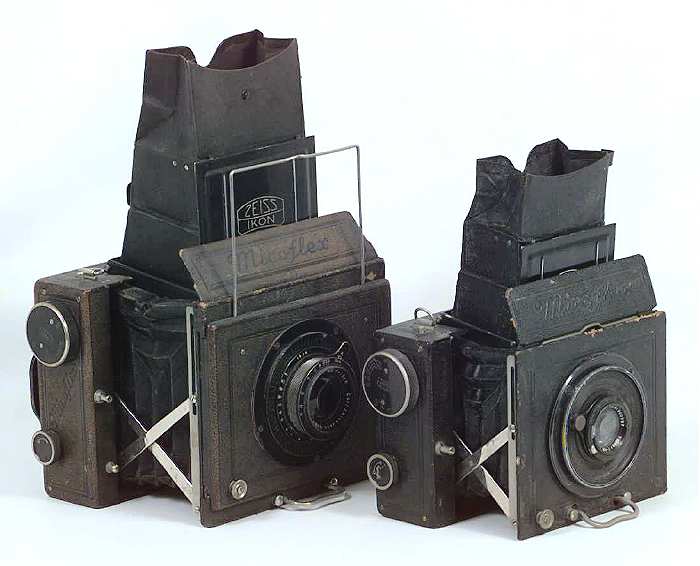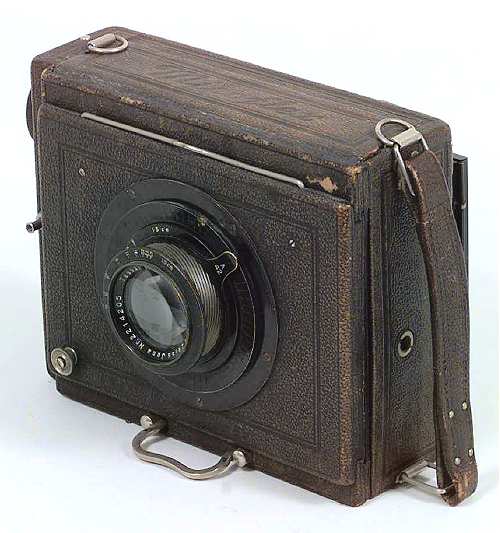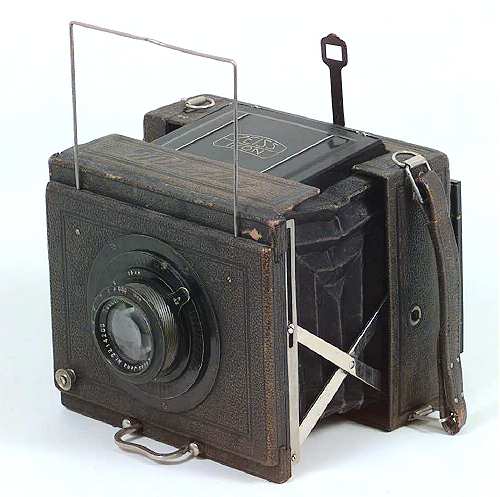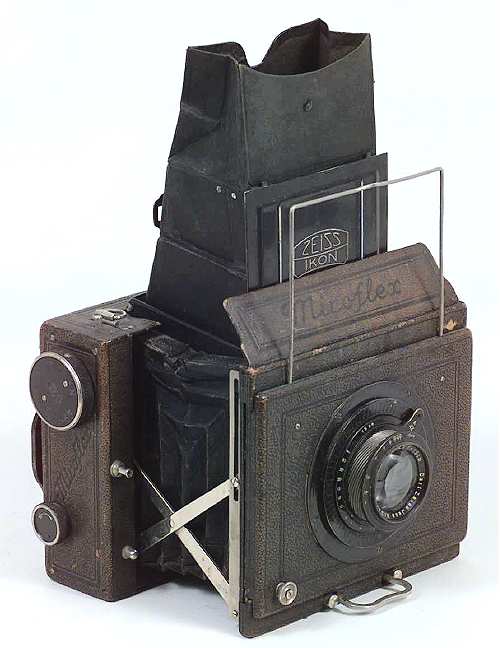
Photographica Pages
An online guide to collectable cameras and related stuff
Zeiss Ikon Miroflex
The Miroflex was a folding SLR for plates, which was no bigger than a conventional press camera if you
disregarded the viewing hood. The design was originally purchased by Nettel, and it was delayed from
reaching the market by the first World War. After Contessa merged with Nettel, they released the
camera in 1919. It was carried over into the Zeiss line after Contessa-Nettel joined Zeiss Ikon in 1926,
and was produced until 1936.
The camera is based on the Nettel, a strut folding press camera with a focal plane shutter. The bellows
are open at the top, capped with a ground glass and a folding viewing hood. Inside the bellows is the
reflex mirror, which swings up out of the way and caps the top of the bellows during exposure. The
mirror can be left up, and the viewing hood folded down, to create a press camera. A wire frame finder
is provided. The viewing hood, top plate and mirror all fold inside the body for storage when the camera
is closed to create a folded camera really no bigger than a comparable Nettel press camera.
The camera was fairly popular, and was sold in two sizes.
The Miroflex A 859/3 was 6.5 x 9cm, and was available with 145/2.7, 135/3.5, or 120/4.5 Tessar lenses,
plus the Bio-Tessar 135/2.8. This is the less common of the two sizes.
The more common Miroflex B 859/7 was for 9 x 12cm was supplied with 165/4.5, 165/3.5 or 165/2.7
Tessar lenses, and the 165/2.8 Bio-Tessar.

The Miroflex B, left, next to the smaller Miroflex A.

The Miroflex B, closed.

The Miroflex B, open as a press camera.

The Miroflex B with the reflex viewing hood open.

The Miroflex B, left, next to the smaller Miroflex A.

The Miroflex B, closed.

The Miroflex B, open as a press camera.

The Miroflex B with the reflex viewing hood open.
